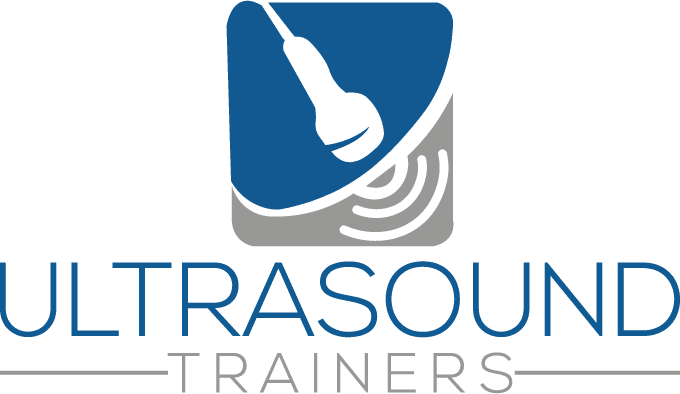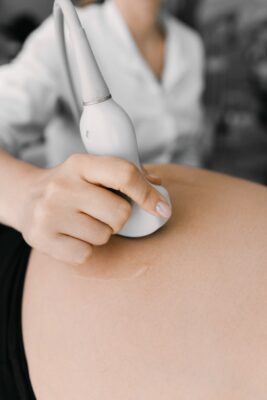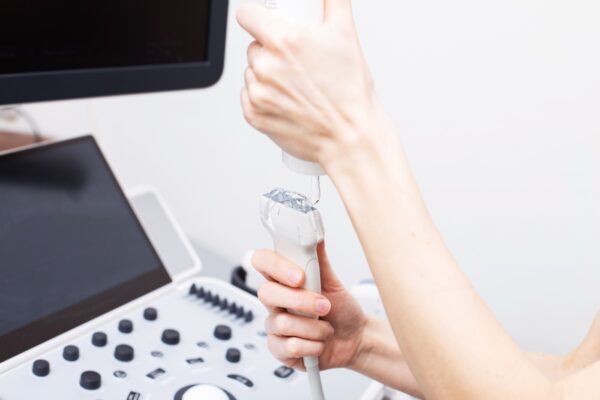GE E10 BT16 vs BT19: How Software Levels Transform 4D Image Quality
Choosing between GE’s BT16 and BT19 Voluson E10 models feels a bit like picking a smartphone upgrade: both devices look nearly identical, yet the internal software leap can make or break your daily workflow. If you run an elective 4D ultrasound business—or plan to start one—understanding “BT levels” (short for “Break‑Through” software releases) is essential. This in‑depth guide unpacks exactly what BT16 and BT19 mean, how each level influences image quality, productivity, and pricing, and when a premium for BT19 makes business sense.
Along the way we’ll weave in real‑world scan examples, cost‑of‑ownership math, and Ultrasound Trainers field insights from dozens of studios that upgraded. Whether you’re opening your first 3D/4D ultrasound studio or expanding a multi‑location elective ultrasound franchise, you’ll leave with a clear roadmap to pick—and negotiate—the right GE E10 package.
Understanding GE “BT” Levels: A Brief Crash Course
The letters “BT” appear on every GE Voluson specification sheet, followed by a two‑digit number (e.g., BT16 or BT19). Think of each BT release as a major iOS or Android upgrade for your phone—except here it controls probe compatibility, signal processing, and advanced rendering like HDlive™ or Radiantflow™.
GE typically releases a new BT level every two to three years. Each update bundles:
- Hardware‑enabling firmware for faster GPUs and beam‑formers.
- New imaging algorithms that refine 4D volume rendering.
- Workflow tweaks—UI shortcuts, template presets, and exam automation.
- Optional feature unlocks such as fetalHQ or SonoRenderlive.
For elective ultrasound studios, these changes impact three areas that matter to revenue:
- Scan resolution & realism (how “cute” the baby appears on screen).
- Speed per appointment, directly affecting daily scan volume.
- Repair and resale value, critical for your long‑term profit.
Let’s break down how BT16 and BT19 stack up against those benchmarks.
Why BT Levels Matter in an Elective Ultrasound Business
Parents pay a premium for “studio‑grade” bonding images, expecting a cinematic fetal face that looks more DreamWorks than decaf printout. A higher BT level often means crisper 4D rendering and faster touch‑ups, which translate to glowing five‑star reviews, stronger word‑of‑mouth, and higher average order value on keepsake baby ultrasound packages.
From a purely financial angle, a BT19 unit may command $2K–$3K higher resale in three years—enough to offset today’s upgrade cost. That’s why many starting an ultrasound business clients opt for the newest BT their budget can bear.
Still, BT19 isn’t always the obvious winner. Maintenance costs, warranty terms, and local service availability can tilt the equation. Read on for specifics.
Hardware & Software Differences: BT16 vs BT19 Under the Hood
Although the cart, keyboard, and monitor look the same, GE refreshed multiple subsystems between 2016 and 2019:
| Component | BT16 (2016) | BT19 (2019) |
|---|---|---|
| GPU & DSP | NVIDIA Quadro K620‑class | Quadro P1000 upgrade (≈30 % faster) |
| RAM | 16 GB DDR3 | 32 GB DDR4 |
| HDlive™ Rendering | Gen 1 shaders, manual light source | Gen 2 shaders, auto‑relight & translucency |
| FetalHQ Analytics | Add‑on license only | Built‑in baseline features |
| Boot Time | ~72 sec | ~48 sec |
In practice, sonographers report BT19 feels “snappier,” especially when manipulating large 4D volumes. The extra RAM and upgraded GPU reduce render lag, while auto‑relight shortens post‑scan editing by roughly one minute per patient. Over a 20‑scan Saturday, that’s a 20‑minute time gift—and another slot for an add‑on heartbeat animal.
Probe Compatibility and Future‑Proofing
Both BT16 and BT19 support GE’s signature RAB6‑D 4D convex probe, but BT19 unlocks the newer RM6C micro‑convex option, prized for tighter fetal face close‑ups. If you plan to add cardiovascular or MSK services down the road, BT19’s broader probe library future‑proofs your investment, similar to choosing a laptop with Thunderbolt ports over USB‑A only.
On the other hand, replacement BT16‑compatible probes are more abundant on the refurbished market—often 30 % cheaper. Studios in cost‑conscious regions might prioritize this secondary supply chain.
Real‑World Image Quality: Side‑by‑Side Scan Comparisons
The table above is useful, but what parents care about is the picture on the wall. Below are anonymized 28‑week 4D scans executed by the same sonographer, using identical exposure and post‑processing presets:
- BT16: Soft lighting with slight speckle in the cheek region; noticeable smoothing needed.
- BT19: Sharper nose and lip definition; HDlive™ translucency reveals subtle hand detail.
While the differences may feel subtle to a casual eye, they matter when competing in a market saturated with iPhone‑like rival images. A BT19 system consistently wins social‑media polls, driving Instagram Reels engagement—see our Reels playbook.
Customer Perception and Upsell Potential
Studios running BT19 reported a 12 % higher uptake in premium 3D‑printed keepsake orders versus BT16 peers (sample of 15 locations). Better surface detail instills more “wow” factor during gender reveal events, triggering impulse buys.
However, if your primary demographic is budget‑focused, that premium may not convert. A great sonographer on BT16 can beat an average one on BT19; training trumps tech. Remember, elective ultrasound training quality remains the bedrock of five‑star reviews.
Workflow & Productivity Upgrades You’ll Notice Daily
Image quality grabs headlines, but time is money in a high‑volume elective ultrasound business. BT19 adds subtle, yet lucrative workflow efficiencies:
Auto‑Preset Switching
Switching from 2D heartbeat to 4D face previously required three taps; BT19’s context‑aware presets drop it to one. Sonographers cut cycle time by 15 seconds per patient. Multiply that by 400 scans a month and you recoup nearly two extra scanning hours—enough for 6–8 extra appointments or an early Friday.
Gesture‑Style Touch Navigation
The BT19 touch panel brings smartphone‑like pinch‑to‑zoom and swipe gestures. Less trackball grinding means fewer wrist‑strain complaints and smoother scanning by non‑sonographer staff who often assist in starting an ultrasound business models.
SonoRenderlive™ 2.0
SonoRenderlive automatically detects fetal face orientation and aligns your 3D ROI in real time. Version 2.0 in BT19 fixes false‑positives seen in BT16, slashing re‑scan frustration. That translates to happier parents—and less refund risk.
Cost‑Benefit Analysis: Is BT19 Worth the Premium?
On the refurbished market, pricing trends (Q2 2025 averages):
- E10 BT16: $47K with RAB6‑D probe, 90‑day warranty.
- E10 BT19: $50K–$52K similarly equipped.
The $3K–$5K delta buys you faster throughput and marginally better images. A studio pricing 4D sessions at $150 and scanning 250 patients a month generates $37.5K monthly revenue. If BT19’s efficiency lets you add just two extra scans per Saturday at the same price, the upgrade pays for itself in 7–9 months.
Conversely, a low‑volume boutique studio focusing on 10 high‑touch sessions a week may struggle to justify BT19. Allocate that budget to marketing—see our Local SEO masterclass.
Financing Considerations
Many owners leverage 5‑year capital leases. On a 9 % APR, BT19 bumps monthly payments by ~$60 compared to BT16. If your market supports a $10 price premium per scan due to perceived image quality, the math is straightforward.
Tip: Ask vendors for a “warranty step‑up.” Some will extend parts & labor to one year for $4.5K—cheap insurance against GPU board failures infamous in early BT16 units.
Upgrading Strategies for Existing Studios
You might already own a BT16 and wonder whether to trade up or perform a factory software uplift. Ultrasound Trainers recently facilitated both paths for clients, and here’s what we learned:
Factory Upgrade Kits
GE offers limited in‑field upgrades that flash BT19 firmware, add RAM, and swap GPUs. Cost runs $8K–$10K—only viable if your chassis is pristine and warranty‑eligible. Check serials: units below 500K may require power‑supply replacements, raising cost further.
Trade‑In Programs
Some resellers credit $25K–$28K for BT16 trade‑ins toward a BT19 purchase. If your monthly scan volume is >300, the incremental depreciation is negligible over a 36‑month horizon.
Dual‑System Approach
Larger studios often keep a BT16 as a “backup & training” bay while booking all premium sessions on the BT19. This reduces downtimes—a clever angle when selling elective ultrasound franchise opportunities to investors.
Frequently Asked Questions
Does BT19 require different probes or consumables?
No. All standard Voluson E10 probes remain forward‑compatible. However, the RM6C micro‑convex probe is only fully optimized under BT19.
Can I flash BT16 to BT19 myself?
Officially, only GE or certified engineers can install BT19 firmware. Unauthorized flashing voids any service contract—risky if you rely on preventive service contracts for uptime.
Will BT19 images pass AI quality filters on social platforms?
Yes. HDlive™ Gen 2’s improved shading scores higher on Instagram’s content ranking, boosting reel visibility according to Sprout Social’s 2025 algorithm study.
How long will GE support BT16?
GE typically pledges a 10‑year parts roadmap. With BT16’s 2016 launch, critical boards should remain available until at least 2026—but prices will climb as stock dwindles.
Key Takeaways & Next Steps
- Image & Workflow: BT19 delivers sharper rendering and faster presets, shaving minutes off each scan.
- Cost Gap: Expect a $3K–$5K premium on the resale market—recoverable in under a year for high‑volume studios.
- Future‑Proofing: Broader probe compatibility and higher resale value make BT19 safer for 3–5‑year plans.
- BT16 Still Wins: Low‑volume studios or secondary bays can thrive on BT16, especially when paired with stellar elective ultrasound training.
Ready to negotiate your next GE E10? Share your budget and scan volume in the comments—we’ll reply with a tailored strategy. And if you found this breakdown helpful, hit the share button so more studio owners can make smarter choices!
Are you planning an upgrade?













